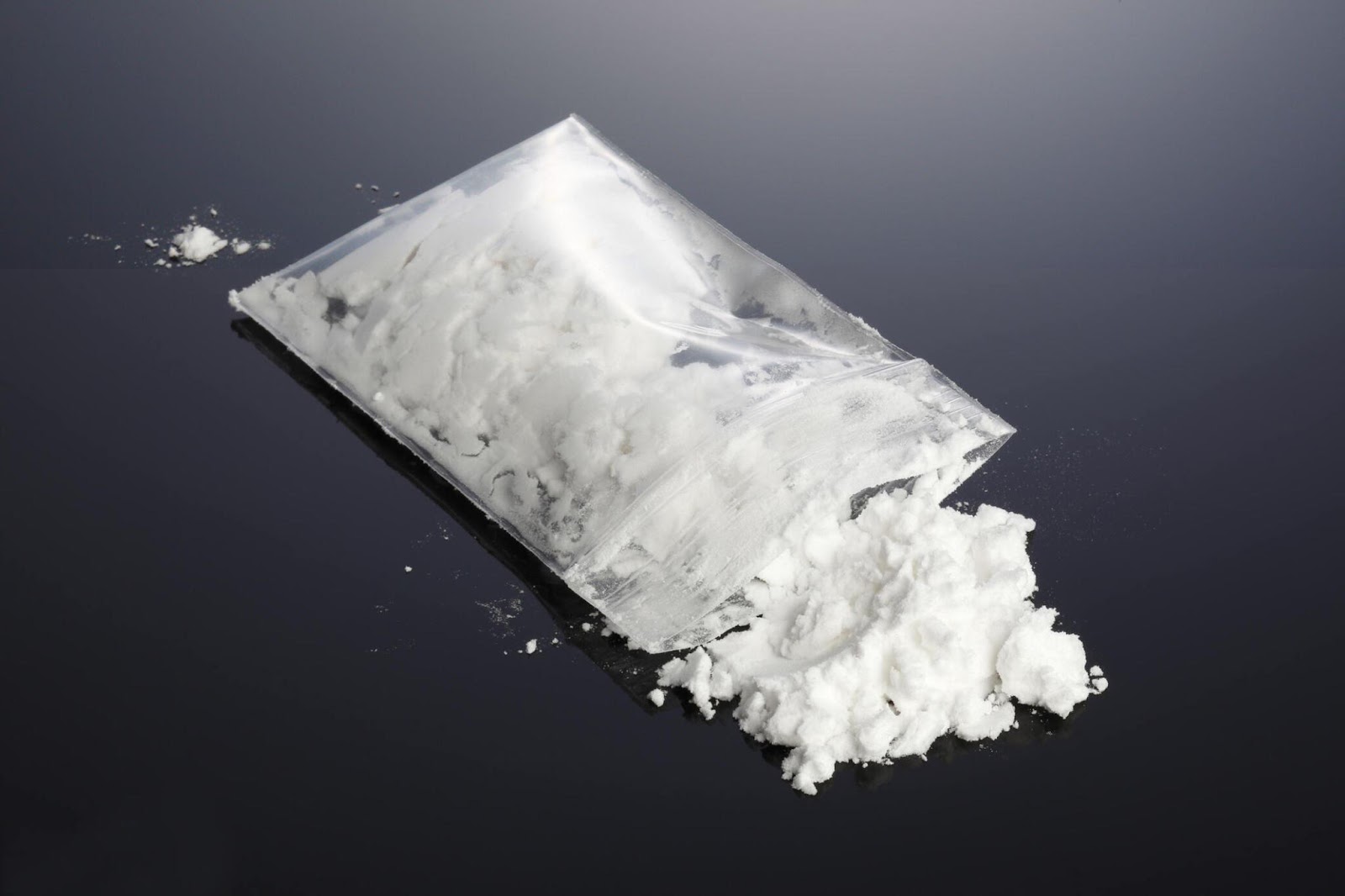Understanding Monkey Dust and Its Effects : The Truth Behind The Headlines in the UK
In the shadowed corners of urban myths and tabloid sensationalism lies the reality of a drug known as monkey dust. Stirring widespread concern and intrigue, especially after its association with alarming incidents in Stoke-on-Trent, UK, monkey dust has become synonymous with disturbing tales of cannibalism and superhuman strength.
But beyond the headlines, what is monkey dust, and how does it impact individuals and communities? This comprehensive exploration seeks to demystify monkey dust, examining its effects, addiction potential, and the myths surrounding it.
What is Monkey Dust? An In-depth Analysis
Monkey dust is a term that has echoed through the alleys of urban myths, seized headlines with its alarming effects, and stirred a mix of fear and curiosity across the UK and beyond. At its core, monkey dust is the street name for a synthetic psychoactive substance known scientifically as MDPV (3,4-methylenedioxypyrovalerone).
This stimulant drug, part of the broader category of substances referred to as “bath salts,” mirrors the euphoric rush associated with more widely known stimulants like cocaine, ecstasy, and amphetamines.
The Chemistry of Monkey Dust
To understand the profound impact of monkey dust, it’s crucial to delve into its chemical makeup. MDPV is a cathinone derivative, a family of drugs that are synthetic versions of a natural stimulant found in the khat plant. What sets MDPV apart is its potency and the efficiency with which it acts on the brain.
By inhibiting the reuptake of neurotransmitters such as dopamine and norepinephrine, MDPV significantly amplifies levels of these chemicals in the brain. This action results in the intense feelings of euphoria and heightened alertness that users seek. However, this chemical alteration comes at a high price, leading to severe side effects and potential for addiction.
Forms and Consumption
Monkey dust is most commonly encountered in a fine powder or crystalline form, offering users a variety of methods for consumption. Snorting is a prevalent method, delivering a rapid onset of effects as the drug is absorbed directly into the bloodstream through the nasal tissues.
Alternatively, wrapping the powder in rolling papers and swallowing, known as “bombing,” or smoking it in a pipe are other methods users employ to achieve the desired high. These consumption methods contribute to the drug’s appeal, allowing users to choose their preferred way to administer it.
The Harrowing Effects of Monkey Dust
The allure of monkey dust lies in its potent high, capable of lasting up to 12 hours. However, this comes with a heavy price. Users often experience hallucinations, paranoia, irrational behaviour, and marked increases in aggression and violent tendencies.
The chemical interaction within the brain can mimic the aggression seen with cocaine and methamphetamine use, fueled further by the drug’s overpowering control over one’s actions.
Stoke-on-Trent witnessed the drug’s devastating grip since its surge in use in 2018, with numerous accounts of erratic and violent behaviour profoundly affecting the community.
The Path to Addiction : Why Monkey Dust Is Addictive?
Monkey dust addiction is a complex web of psychological and physical dependence. Individuals grappling with existing substance abuse or mental health issues may find temporary solace in the drug’s euphoric escape.
Meanwhile, recreational users can quickly spiral into addiction, chasing the high with increasing doses, leading to a cycle of dependence and withdrawal symptoms including insomnia, nausea, and paranoia. Factors such as unresolved trauma, drug availability, loneliness, and a family history of addiction can elevate the risk of falling into the monkey dust trap.
Dopamine surge: MDPV acts like a stimulant, causing a flood of dopamine, a neurotransmitter associated with pleasure and reward. This intense high is what users crave and seek to repeat .
Disrupts natural balance: MDPV not only increases dopamine release but also blocks its reabsorption. This disrupts the brain’s natural dopamine regulation, making it harder to feel good without the drug [6]. Over time, the brain adjusts to the presence of MDPV, requiring more and more of the drug to produce the same pleasurable effects. This is what creates tolerance and dependence, hallmarks of addiction.
Monkey Dust on the Streets: The Short-Lived Rise of MDPV in the UK
Around 2010, a new stimulant called MDPV, also known as Monkey Dust, began appearing on the UK drug scene. Initially intended for research, MDPV’s stimulant and hallucinogenic effects quickly attracted recreational users. This caused some alarm due to the drug’s unpredictable and potentially dangerous nature.
However, the UK government reacted swiftly, and In 2010, MDPV was classified as a Class B drug under the Misuse of Drugs Act. This classification restricts its availability and discourages use due to legal repercussions. While the exact number of users is unknown, the swift action by the UK authorities likely prevented a wider MDPV addiction crisis from developing.
Reasons Behind the Popularity of Monkey Dust in The UK
The rising popularity of monkey dust, especially in regions like Stoke-on-Trent in the UK, can be attributed to a combination of socio-economic factors, the unique properties of the drug itself, and challenges in law enforcement and public awareness.
Understanding why monkey dust is gaining traction is crucial in formulating effective strategies to combat its use and mitigate its impacts on individuals and communities.
Affordability and Accessibility
One of the primary drivers behind monkey dust’s popularity is its cost-effectiveness. With prices as low as £2 per dose, it’s significantly more affordable than many other recreational drugs.
This low cost makes it particularly appealing to individuals in lower socio-economic brackets, including those experiencing homelessness or poverty. The ease of access, through street dealers or even online sources, further contributes to its widespread use.
Potent Effects and Long Duration
Monkey dust’s potent psychoactive effects, which can last for several hours from a single dose, offer users a powerful, albeit dangerous, escape from reality. The drug’s ability to induce intense euphoria, heightened energy, and in some cases, feelings of invincibility, makes it attractive to those seeking an intense high.
However, these effects come with severe risks, including paranoia, hallucinations, and aggressive behaviour, often overlooked by those chasing the drug’s temporary benefits.
Socio-economic Despair
Areas hit hardest by monkey dust addiction often face broader socio-economic challenges, including high unemployment rates, social disenfranchisement, and limited access to healthcare and addiction services.
In such environments, substances like monkey dust can seem like a temporary solution or escape, exacerbating the cycle of addiction and poverty.
The Challenge of Regulation and Enforcement
The synthetic nature of monkey dust presents significant challenges for regulation and law enforcement. Manufacturers can alter the chemical composition of the drug to evade legal restrictions, making it difficult to control its distribution.
This adaptability not only complicates efforts to combat its spread but also poses risks to users who may be unaware of the exact composition and potential effects of the drug they are consuming.
Lack of Awareness and Understanding
The myths and sensationalism surrounding monkey dust can sometimes overshadow the reality of its dangers, leading to a lack of awareness about the risks associated with its use.
Without comprehensive public education campaigns to dispel myths and provide accurate information, individuals may underestimate the potential harm of monkey dust, contributing to its popularity.
Side Effects Of Monkey Dust
The side effects of monkey dust (MDPV or Methylenedioxypyrovalerone) can be severe and wide-ranging, affecting users both physically and psychologically. Below is a more in-depth look at these side effects:
Physical Side Effects
- Euphoria and Energy Rush: Initially, users may experience intense euphoria and a surge of energy, similar to the effects of stimulants like cocaine and amphetamines.
- Risk of Overdose: The drug’s potency and unpredictability make overdosing a real risk, which can be fatal. The effects of an overdose can occur with as little as 3mg-5mg of the substance
- Health Complications: Chronic use can lead to serious health problems, including heart attacks, seizures, and kidney failure, due to the immense strain it puts on the cardiovascular system.
Psychological Side Effects
-
- Hallucinations: Users may experience distressing auditory and visual hallucinations that contribute to the drug’s unpredictable effects.
- Paranoia and Aggression: Monkey dust can cause serotonin levels to drop, leading to increased aggression and paranoia, similar to the effects seen with cocaine and methamphetamine use.
- Irrational and Violent Behaviour: The combination of hallucinations, paranoia, and the drug’s strong effects can lead to erratic, irrational, and sometimes violent behaviour. Users have been known to commit acts of violence and exhibit extreme strength.
Seeking Help and Support
Recovery from monkey dust addiction involves a holistic approach, beginning with detoxification to address physical dependency, followed by rehabilitation to tackle the psychological roots of addiction. The journey is challenging but not insurmountable, with resources and support systems in place to guide individuals towards reclaiming their lives from the grip of this dangerous drug.
Symptoms Of Monkey Dust Addicts
This Monkey dust, also known as MDPV (Methylenedioxypyrovalerone), is a synthetic cathinone found in some bath salts, a category of drugs that mimic the effects of natural stimulants like khat. The use of monkey dust can lead to severe physical and psychological effects.
The symptoms observed in individuals using monkey dust can vary based on the amount consumed, the frequency of use, and the individual’s physiology. However, common symptoms of monkey dust use include:
Psychological Effects:
- Severe paranoia
- Hallucinations and delusions
- Extreme anxiety and panic attacks
- Agitation and aggressive behaviour
- Confusion and disorientation
- Psychotic episodes
Physical Effects:
- Increased heart rate and hypertension
- Hyperthermia (elevated body temperature)
- Excessive sweating
- Nausea and vomiting
- Insomnia
- Chest pain
- Muscle spasms and seizures
Behavioural Changes:
- Engaging in risky behaviours
- Self-harm
- Violent actions towards others
- Social withdrawal and isolation
Long-term use of monkey dust can lead to more severe health issues, including kidney failure, cardiovascular problems, and lasting psychiatric conditions. Due to its potent and unpredictable effects, monkey dust poses a significant risk to individuals’ physical and mental health.
If someone is suspected of using monkey dust or experiencing its side effects, seeking medical and psychological support is crucial.
Government’s Steps To Tackle The Rising Tide Of Monkey Dust Addiction
The UK government is taking a few steps to tackle the issue of “monkey dust” (also known as synthetic cathinones):
- Reviewing Classification: The government commissioned an independent review to assess the harms of monkey dust and similar drugs. This review will determine if these substances should be reclassified as Class A drugs (the most serious classification). Currently, monkey dust is a Class B drug
- Increasing Penalties: Reclassifying monkey dust as a Class A drug would mean harsher penalties for those caught supplying the substance. The maximum sentence for supplying a Class A drug is life imprisonment.
- Funding Initiatives: The government has provided funding for research on monkey dust and for improving drug treatment services in areas particularly affected, like Stoke-on-Trent https://www.ukat.co.uk/addiction/drug/monkey-dust/.
Overall, the UK government is taking a multi-pronged approach to tackle monkey dust, focusing on both law enforcement and harm reduction strategies.
Monkey Dust Help And Support
For individuals grappling with monkey dust addiction in the UK, there are several avenues of help and support available. Recognizing the need for assistance is the first step towards recovery.
The UK offers a comprehensive network of services designed to aid individuals in overcoming addiction, addressing both the immediate physical challenges and the longer-term psychological impacts. Below, we detail some key resources and support systems for those affected by monkey dust use.
NHS Services
The National Health Service (NHS) provides a range of addiction services, including advice, support, and treatment options. You can start by visiting your GP, who can discuss your concerns with you and refer you to local drug treatment services.
The NHS website also offers a wealth of information on addiction and recovery, including how to find services in your area.
Local Drug and Alcohol Services
Across the UK, there are many local organisations and health services dedicated to helping those with substance misuse issues. These services offer confidential advice, information, and support. They can provide access to detoxification programs, counselling, and drug rehabilitation services tailored to individual needs. To find a service near you, the NHS website or your local council’s website can be useful resources.
Talk to Frank
Talk to Frank is a confidential helpline and website that offers honest information about drugs, their effects, and the law. It provides advice on all aspects of drug use, including how to get help and what to expect from treatment. You can contact Frank 24/7 via a free, confidential helpline or through their website.
SMART Recovery
SMART Recovery (Self-Management and Recovery Training) offers a secular and science-based approach to recovery, focusing on empowering individuals to change and manage addictive behaviours. The program includes face-to-face and online meetings, where participants learn tools and techniques based on cognitive-behavioural therapy and motivational interviewing.
Family and Friends Support
It’s also important for the family and friends of those struggling with addiction to access support. Organisations such as Adfam provide resources and help for families affected by drugs and alcohol, recognizing the crucial role they play in the recovery process.
Conclusion
Monkey dust represents a stark example of the complexities surrounding drug abuse and addiction. As society grapples with these challenges, understanding and compassion are crucial.
Dispelling myths and addressing the underlying causes of addiction can pave the way for more effective solutions, reducing the harm inflicted on individuals and communities alike.
In a world quick to sensationalise and stigmatise, it’s vital to remember the human stories behind the headlines, offering support and hope to those ensnared by substances like monkey dust.
Through education, awareness, and targeted interventions, the battle against monkey dust addiction, and the broader war on drugs, can be fought with knowledge and empathy, steering those affected towards a path of recovery and resilience.





